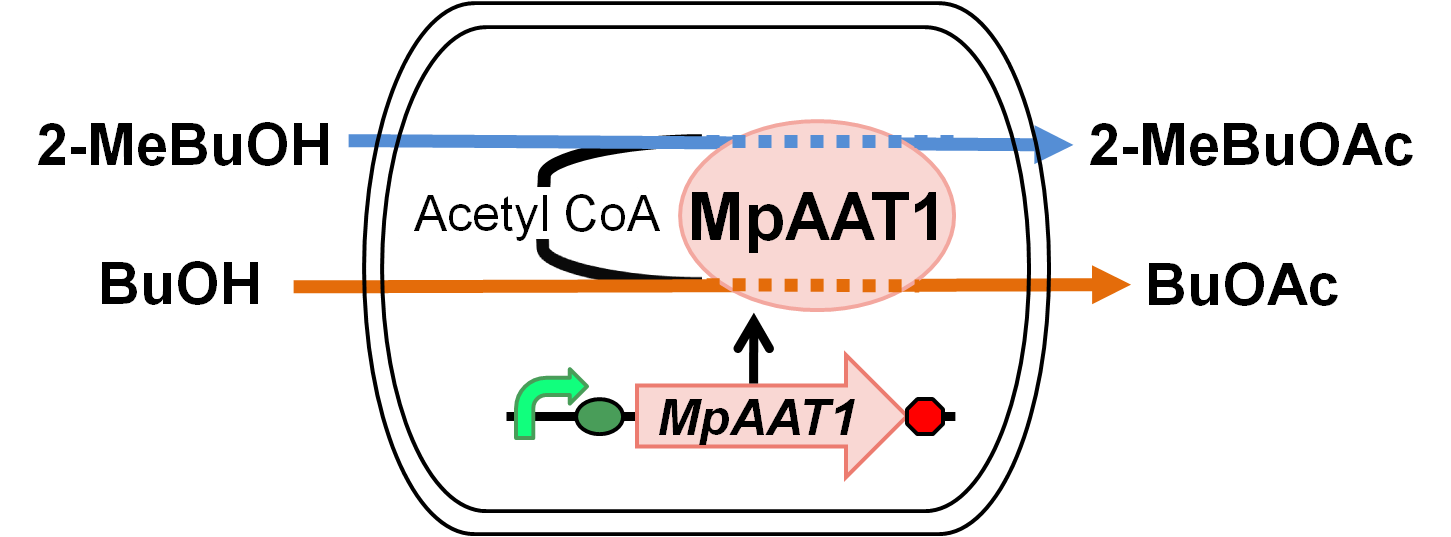Team:Tokyo Tech/Project/Apple Reporter
From 2010.igem.org
(→太一) |
(→Color) |
||
| Line 33: | Line 33: | ||
==Color== | ==Color== | ||
| + | =over view= | ||
| + | Carotenoids are natural organic pigments in plants and bacteria. Synthetic carotenoid pigments colored yellow, red or orange represent about 15-25% of the cost of production of commercial feed. Carotenoids are terpenoid based on a structure having the chemical formula C40H56. There are about 600 carotenoids, which perform a range of functions. For example, light energy absorption, protection against photo-damage, acting as antioxidants, and as precursor to other organic compounds such as vitaminA. | ||
| + | Production of pigment has been worked in iGEM, and quite a few parts for synthesis of carotenoid-related compounds already exist in BioBricks Registry. Since the carotenoid synthetic pathway is huge, BioBricks Registry doesn’t cover all parts to complete the pathway. This time, we intorduced some new BioBrick parts to synthesize more various kinds of carotenoids. And we succeeded in synthesizing astaxanthin, one of the final metabolite of the pathway. Also, astaxanthin is not converted to vitaminA in the human body. Too much vitamin A is toxic for a human, but astaxanthin has lower toxicity. | ||
| + | Furthermore, as the synthetic pathway is completed, it becomes possible to change the hue gradually by controlling the production of several carotenoids. | ||
| + | |||
<!-- ここまでね--> | <!-- ここまでね--> | ||
Revision as of 10:41, 25 October 2010
Apple Reporter
Color
over view
Carotenoids are natural organic pigments in plants and bacteria. Synthetic carotenoid pigments colored yellow, red or orange represent about 15-25% of the cost of production of commercial feed. Carotenoids are terpenoid based on a structure having the chemical formula C40H56. There are about 600 carotenoids, which perform a range of functions. For example, light energy absorption, protection against photo-damage, acting as antioxidants, and as precursor to other organic compounds such as vitaminA. Production of pigment has been worked in iGEM, and quite a few parts for synthesis of carotenoid-related compounds already exist in BioBricks Registry. Since the carotenoid synthetic pathway is huge, BioBricks Registry doesn’t cover all parts to complete the pathway. This time, we intorduced some new BioBrick parts to synthesize more various kinds of carotenoids. And we succeeded in synthesizing astaxanthin, one of the final metabolite of the pathway. Also, astaxanthin is not converted to vitaminA in the human body. Too much vitamin A is toxic for a human, but astaxanthin has lower toxicity. Furthermore, as the synthetic pathway is completed, it becomes possible to change the hue gradually by controlling the production of several carotenoids.
 "
"

